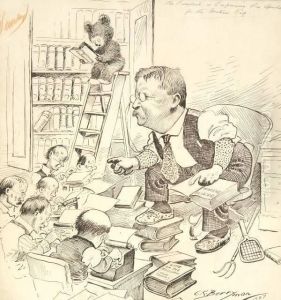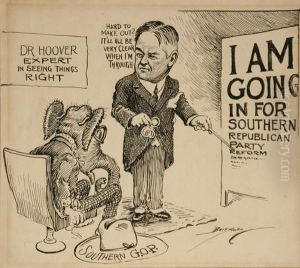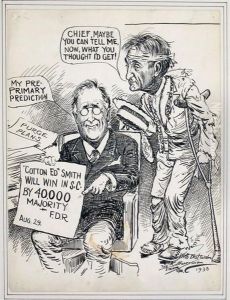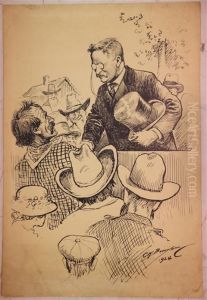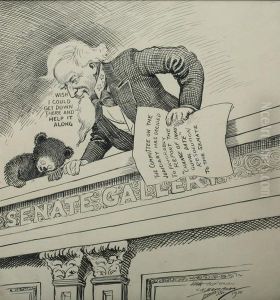Clifford Kennedy Berryman Paintings
Clifford Kennedy Berryman was an influential American political cartoonist whose work gained prominence in the late 19th and early 20th centuries. Born on April 2, 1869, in Clifton, Kentucky, Berryman moved with his family to Texas, where he spent much of his early life. He pursued his early interest in drawing and cartooning, which would later become his career. Berryman initially worked in a surveyor’s office, where he honed his drawing skills before moving to Washington, D.C., to launch his career as a cartoonist.
Berryman's career as a political cartoonist began at the 'Washington Post' in 1891. His work quickly caught the public's eye with its sharp wit and engaging style. In 1907, he moved to the 'Washington Star', where he worked until his death in 1949. Throughout his career, Berryman became known for his ability to capture complex political issues with a sense of humor and clarity. His cartoons covered a wide range of topics, from presidential elections to the everyday lives of Americans, making his work a staple in the political discourse of the time.
One of Berryman's most famous creations was the character of 'Teddy Bear,' named after President Theodore Roosevelt. The character was inspired by an incident during a hunting trip in which Roosevelt reportedly refused to shoot a captured bear, considering it unsportsmanlike. Berryman illustrated this event in a cartoon, and the image of the 'Teddy Bear' became an instant hit, eventually leading to the creation of the stuffed animal toy that is still popular today.
Throughout his long career, Berryman won numerous accolades, including the Pulitzer Prize for Editorial Cartooning in 1944. His legacy is that of a keen observer of American life and politics, and his work has been credited with influencing public opinion and policy. Clifford K. Berryman died on December 11, 1949, in Washington, D.C. His cartoons continue to be studied for their historical significance and are preserved in various institutions, including the U.S. Senate Collection and the National Archives.
